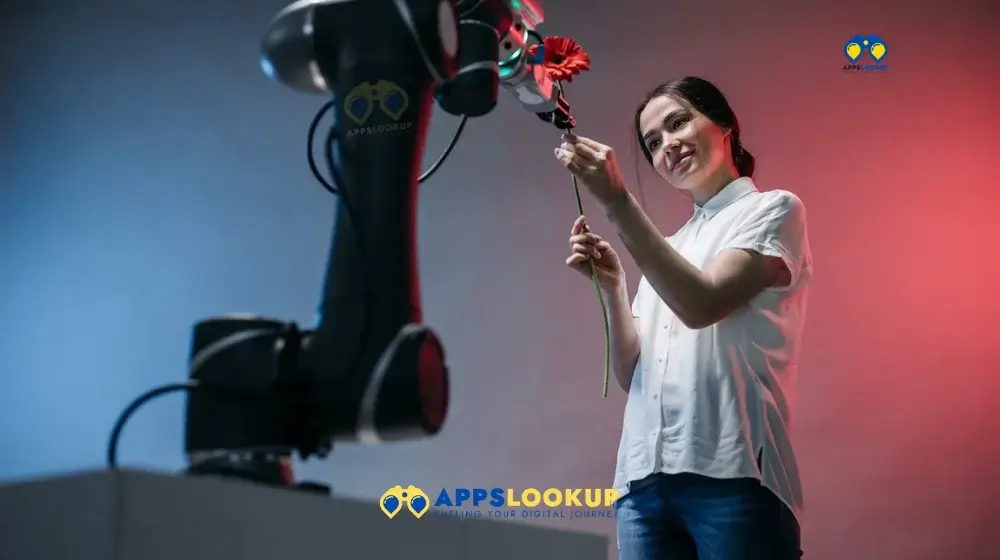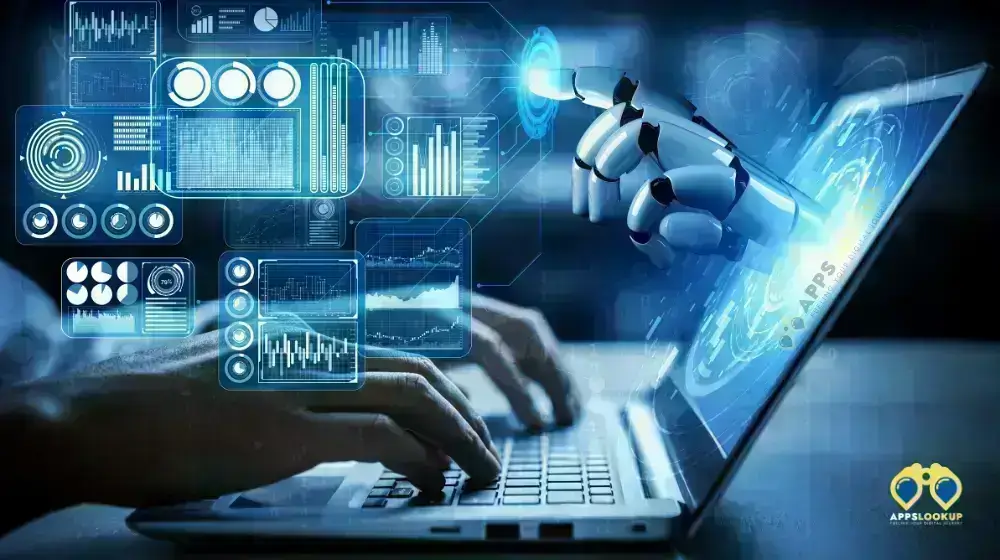The Future of Work Is AI-Driven: How Can You Prepare?

In the constantly evolving tapestry of the professional world, few threads have been as transformative and influential as Artificial Intelligence (AI). From humble beginnings in academic laboratories to today’s ubiquitous presence in industries worldwide, AI stands as a testament to human innovation. But as AI-driven automation and decision-making tools increasingly dominate the workplace, what does this mean for the average worker, manager, or entrepreneur? How can one not just navigate but thrive in this brave new world? This exploration seeks to shed light on these pressing questions.
Imagine a scenario from just a few decades ago: People used typewriters for documentation, telephones for swift communication, and relied on human discretion for major business decisions. But now, step into any contemporary office, and you’ll see a new colleague rising among the ranks: Artificial Intelligence. It’s not a robot sitting by your desk, but a powerful force behind computer screens, aiding in data analysis, automating mundane tasks, answering customer queries, and even assisting in intricate decision-making processes.
Now, why is it essential for us to understand and adjust to this AI-driven professional landscape? Just as one needed to adapt to computers replacing typewriters or emails taking over traditional letters, AI is the new tide of change. Embracing AI means staying relevant, increasing efficiency, and being prepared for future innovations. Moreover, understanding AI empowers professionals to harness its strengths, ensuring that they remain invaluable assets in their industries, while also benefiting from the vast potentials AI offers. It’s not just about keeping up with technology; it’s about moving hand in hand with progress and opening doors to limitless possibilities.
Understanding the AI Revolution

The mention of Artificial Intelligence often conjures up vivid scenes of futuristic cities and robots cohabiting with humans. While we’re not there yet, the strides made in AI are no less revolutionary.
A. At its most basic, Artificial Intelligence can be described as a branch of computer science dedicated to creating systems capable of performing tasks that would otherwise require human intelligence. These tasks encompass areas such as decision-making, visual perception, speech recognition, and even language translation. Two essential components driving AI are:
- Machine Learning (ML): ML allows computers to learn and make decisions without being explicitly programmed. For example, when your email filters spam, it’s using ML to categorize and filter out unwanted messages based on patterns and prior classifications.
- Neural Networks: Inspired by the human brain, these are interconnected algorithms that process information by analyzing vast amounts of data, much like our brain processes information through neurons.
B. The transformative influence of AI can be observed far and wide across various sectors:
- Healthcare: AI is enabling faster, more accurate diagnosis. For instance, algorithms can now detect specific types of cancers by analyzing medical images with a precision that matches, and at times, even surpasses human experts.
- Finance: Many stock trading platforms utilize AI to predict market fluctuations and provide investment insights based on vast data sets of past market behavior.
- E-commerce: Ever wondered how Amazon or Netflix seem to know precisely what you might want next? They use AI-driven recommendation engines to suggest products or movies based on your past behavior and preferences.
- Automotive Industry: Self-driving cars, which once seemed like a distant dream, are now becoming a reality with the integration of sophisticated AI systems that can analyze their surroundings and make split-second decisions.
These instances are merely the tip of the iceberg. The wave of AI is reshaping industries in ways we had once only dreamt of, turning the seemingly impossible into tangible realities.
Jobs That AI is Enhancing and Replacing
Artificial Intelligence, with its promise of automating tasks and increasing efficiency, is transforming the global job market. While there are concerns about job displacements due to AI, there are also areas where AI is amplifying human skills, making the workforce more effective than ever.
A. Enhancing Jobs through Automation:
AI excels at pattern recognition and repetitive tasks. Consequently, professions that entail a lot of repetitive work stand to benefit immensely:
- Data Entry and Analysis: Instead of manual input, AI can quickly sort, input, and analyze vast amounts of data, reducing human errors and drastically increasing efficiency.
- Customer Service: Chatbots, powered by AI, can handle basic queries, allowing human operators to focus on more complex customer interactions, thereby improving response time and customer satisfaction.
- Health Diagnostics: While doctors make the final decisions, AI can assist by swiftly analyzing medical images or data, pointing out potential areas of concern.
B. Jobs Potentially at Risk:
While AI brings improvements, it also comes with challenges, especially in roles where tasks can be fully automated.
- Manufacturing: Jobs involving repetitive tasks, like product assembly, are now being automated with AI-powered robots.
- Basic Financial Services: Roles that involve simple calculations, data tabulation, or straightforward financial advice are susceptible to AI-driven automation.
- Transport: With the advent of self-driving vehicles, professions like trucking or taxi services may see significant changes in the coming years.
C. The Irreplaceable Human Touch:
Despite AI’s growing capabilities, there are aspects it can’t replicate – the human touch, intuition, empathy, and creativity.
- Healthcare: While AI can assist in diagnosis, the empathy, counseling, and patient care provided by nurses and doctors are irreplaceable.
- Creative Professions: Be it art, music, or literature, the unique human touch and creativity can’t be entirely replicated by AI.
- Decision-making Roles: Leadership, strategy development, or any role that requires nuanced judgment, intuition, and understanding of human emotions remains beyond the scope of AI.
In conclusion, while AI is a potent force reshaping the job market, it doesn’t necessarily spell doom. It prompts us to evolve, reskill, and find harmony where human intelligence and artificial intelligence can coexist and complement each other.
Benefits of an AI-Driven Workplace
The integration of Artificial Intelligence in the workplace has ushered in a new era of productivity and innovation. Its transformative power is reshaping industries, opening up opportunities, and delivering value in previously unimaginable ways. Here’s a deep dive into the specific benefits:
A. Increased Efficiency and Productivity:
- Automated Routine Tasks: By automating repetitive tasks like data entry, invoice processing, or even simple customer queries, businesses can save valuable time and resources. This not only streamlines operations but also ensures accuracy.
- Predictive Analysis: AI can predict future trends based on historical data. For instance, in a sales-driven organization, AI can predict when a customer is most likely to make a purchase, enabling timely engagement and improving sales cycles.
- Resource Allocation: AI can analyze workflows and identify bottlenecks or underutilized resources, ensuring that human and material resources are used to their maximum potential.
B. Improved Decision-making and Insights Driven by Data:
- Data-driven Insights: In a world brimming with data, AI can sift through vast amounts of information, identify patterns, and provide actionable insights. This means decisions are no longer based on hunches but hard data.
- Risk Management: In sectors like finance, AI can predict market fluctuations or potential investment risks, allowing businesses to make informed decisions.
- Tailored Strategies: Be it marketing campaigns or product launches, AI can analyze consumer behavior, preferences, and feedback to craft strategies that resonate with the target audience.
C. Enhanced User Experiences in Products and Services:
- Personalization: AI algorithms can analyze individual user behavior and preferences, enabling businesses to offer personalized content, product recommendations, or even tailor user interfaces for improved experiences.
- 24/7 Customer Service: AI-powered chatbots can handle customer queries around the clock, ensuring that user concerns are addressed promptly, even outside regular business hours.
- Product Enhancement: Feedback loops powered by AI can continuously gather user feedback on products and services. This information can then be used to refine and enhance offerings, ensuring they evolve based on user needs and preferences.
In essence, an AI-driven workplace doesn’t just mean a shift in how tasks are performed; it signifies a paradigm shift in efficiency, decision-making, and user engagement. As businesses globally recognize and embrace these benefits, we’re witnessing a revolution in how work is understood and executed.
Preparing Yourself for the AI Era
The evolution of AI and its subsequent integration into various sectors necessitates that professionals not only stay updated with the latest in AI but also refine their unique human skills. Here’s how you can navigate this transformation:
A. Embracing a Lifelong Learning Mindset:
The pace at which AI is evolving requires continuous learning and adaptation.
- Online Courses on AI Basics and Its Applications: Platforms such as Coursera, Udemy, and edX offer courses ranging from beginner to expert levels. These courses cover the basics of AI, machine learning, and deep learning, providing hands-on experience.
- Workshops and Seminars on AI Trends: Regularly attending industry-specific workshops or seminars can provide insights into the latest AI trends and their practical applications. These platforms also offer a chance to meet AI enthusiasts and experts, enhancing your knowledge base.
B. Focusing on Soft Skills Development:
While AI can handle data and logic, the nuances of human emotion, creativity, and intuition remain irreplaceable.
- Problem-solving: This skill revolves around finding solutions to complex issues, a realm where human creativity often outshines algorithms.
- Emotional Intelligence: Being aware of, controlling, and expressing one’s emotions and handling interpersonal relationships judiciously and empathetically is a domain where AI lags behind.
- Critical Thinking: The ability to analyze situations, consider multiple perspectives, and make informed decisions based on reasoning is a much-valued human skill, especially in leadership roles.
C. Understanding the Ethics and Implications of AI:
As AI becomes more integrated into daily life, understanding its ethical implications becomes paramount.
- AI algorithms can sometimes mirror societal biases, leading to unfair or discriminatory outcomes. Professionals need to be aware of such issues and champion fairness and transparency in AI applications.
- Privacy concerns, especially in sectors like healthcare and finance, require professionals to balance AI’s capabilities with ethical considerations.
D. Networking with Professionals in the AI Field:
Building relationships with AI practitioners can provide firsthand insights into the practical challenges and solutions in AI implementation.
- Join AI communities and forums online, like Reddit’s Machine Learning community or AI conferences like NeurIPS and ICML.
- Local meetups or AI-focused groups can offer networking opportunities, discussions, and collaborative projects.
In summation, preparing for the AI era isn’t just about understanding algorithms but also about refining the unique human skills that set us apart. As AI continues to reshape industries, a balanced approach—embracing both technology and our innate human strengths—will be the key to thriving in this new age.
- AppsLookup: Your Ultimate Destination for App Discovery
- 9 Best AI Reel Makers for Creating Engaging Instagram Videos
- How to Use ChatGPT for SEO : What NOT To Do -❌
- AI Storytelling Tools: A Guide for Writers
- Tome.App: The future of storytelling with AI
- AlphaGeometry: A Deep Dive into DeepMind’s AI Geometry Whiz
- Google Gemini AI: The Powerful New Tool You Need to Know About
Businesses Adapting to AI
The tide of AI is not just a passing trend; it’s a transformative wave that’s reshaping the very foundations of businesses across sectors. From startups to global conglomerates, the embrace of AI is no longer a luxury but a necessity to remain competitive and relevant. Here’s how businesses are adapting:
A. Importance of Integrating AI into Business Strategies:
- Competitive Advantage: With AI, businesses can gain an edge over competitors by enhancing efficiency, personalizing customer experiences, and making data-driven decisions.
- Cost Efficiency: Over time, the integration of AI can lead to significant cost savings. Automated customer service, predictive maintenance, and efficient resource allocation are some areas where costs can be reduced.
- Future Preparedness: AI is no longer the future; it’s the present. Businesses integrating AI today are laying a foundation to be at the forefront of future innovations and market demands.
**B. Training and Upskilling Employees:**
- Bridging the Skill Gap: As AI systems take over specific roles, there’s a pressing need to train and upskill employees to take on more complex tasks and roles that AI cannot fulfill.
- Promoting a Collaborative Mindset: Employees should be trained not just in the technical aspects of AI but also in working alongside AI tools. Emphasizing teamwork between humans and machines can lead to optimal results.
- Continuous Learning Platforms: Businesses can collaborate with online learning platforms or institutions to provide regular training sessions for their employees, ensuring they’re always updated with the latest in AI.
C. Investing in AI Research and Development:
- Tailored AI Solutions: While there are plenty of off-the-shelf AI solutions available, investing in R&D allows businesses to develop AI tools tailored to their specific needs and challenges.
- Staying Ahead of the Curve: The AI landscape is continuously evolving. Investing in R&D ensures that businesses are not just reacting to the latest trends but actively shaping and pioneering them.
- Ethical Considerations: With AI, ethical considerations like bias, transparency, and data privacy come to the fore. R&D can help businesses create AI solutions that uphold these ethical standards.
In conclusion, the integration of AI in business is an ongoing journey, not a destination. By aligning business strategies with AI, continuously upskilling employees, and pushing the boundaries through research and development, businesses can harness the full potential of AI, driving growth and innovation in this AI-centric era.
The Human and AI Collaboration
The rise of AI doesn’t necessarily signify the sunset of human relevance in professional spaces. Instead, it heralds a new dawn where human creativity, intuition, and emotion work in tandem with AI’s precision, speed, and analytical prowess. Together, this synergy can redefine industries and outcomes.
A. Examples of Industries Where AI Complements Human Skills:
- Healthcare: While AI can analyze medical scans with impeccable accuracy, the human touch, empathy, and decision-making skills of physicians remain paramount for patient care and treatment decisions.
- Design and Creativity: AI tools can suggest designs based on trending styles, but the creativity, innovation, and unique perspective of a human designer remain unmatched.
- Education: While AI can personalize learning by analyzing student performance, human educators provide mentorship, motivation, and context that a machine can’t replicate.
B. The Balance Between Automation and Human Touch:
- Customer Service: AI chatbots can handle routine queries efficiently, but complex issues and emotionally-charged interactions benefit from the understanding and empathy of a human agent.
- Decision-making in Business: While AI provides data-driven insights, strategic decisions require human intuition, experience, and understanding of the broader business landscape.
- Content Creation: AI can generate reports or articles based on data, but storytelling, opinion pieces, and emotive content rely heavily on the human touch.
C. Strategies for Effective Human-AI Collaboration:
- Clear Role Demarcation: Clearly define what tasks are managed by AI and which ones require human intervention. This ensures smooth operations and prevents overlaps or conflicts.
- Continuous Training: Equip teams with the knowledge to understand AI outputs. For instance, if an AI tool is used for data analysis, train the team to interpret and act on these insights.
- Feedback Loops: Ensure mechanisms where human workers can provide feedback on AI outputs. This iterative feedback can be used to fine-tune AI systems for better results.
- Ethical Guidelines: Set clear ethical standards that guide how AI should be used, ensuring it complements rather than compromises human roles and values.
In weaving the fabric of the future, neither AI nor human abilities alone are the golden threads. Instead, it’s their interwoven synergy, the beautiful tapestry of human emotion and machine precision, that holds the promise of a brighter, more efficient, and empathetic tomorrow.
Conclusion
As we stand on the cusp of an era where Artificial Intelligence is not just an auxiliary tool but a core driver of processes, it’s essential to reflect on the journey we’ve embarked upon.
We started this exploration by understanding the rapid rise of AI and its increasing imprint on various professions. From automating mundane tasks to assisting in complex decision-making, AI is proving to be a formidable force, reshaping the very essence of work and productivity. It’s not just about machines taking over; it’s about machines enhancing, aiding, and revolutionizing the way we perceive tasks.
However, like every significant change, this too comes with its set of apprehensions. It is here that the emphasis on proactive adaptation becomes paramount. Being ahead doesn’t necessarily mean being tech-savvy; it’s about understanding the balance. It’s a call to individuals and businesses alike to not just reactively adapt but to proactively evolve. To harness the full spectrum of possibilities that AI brings, there’s a pressing need for continuous learning, upskilling, and openness to change.
In closing, the fusion of AI and work offers a vista filled with promise and potential. But as with any tool, its utility depends on the hands that wield it. The future, thus, isn’t about AI vs. Humans; it’s about AI *and* Humans. Together, in this symphony of collaboration, lies the exciting prospect of a future that’s efficient yet empathetic, precise yet imaginative, automated yet very, very human.








